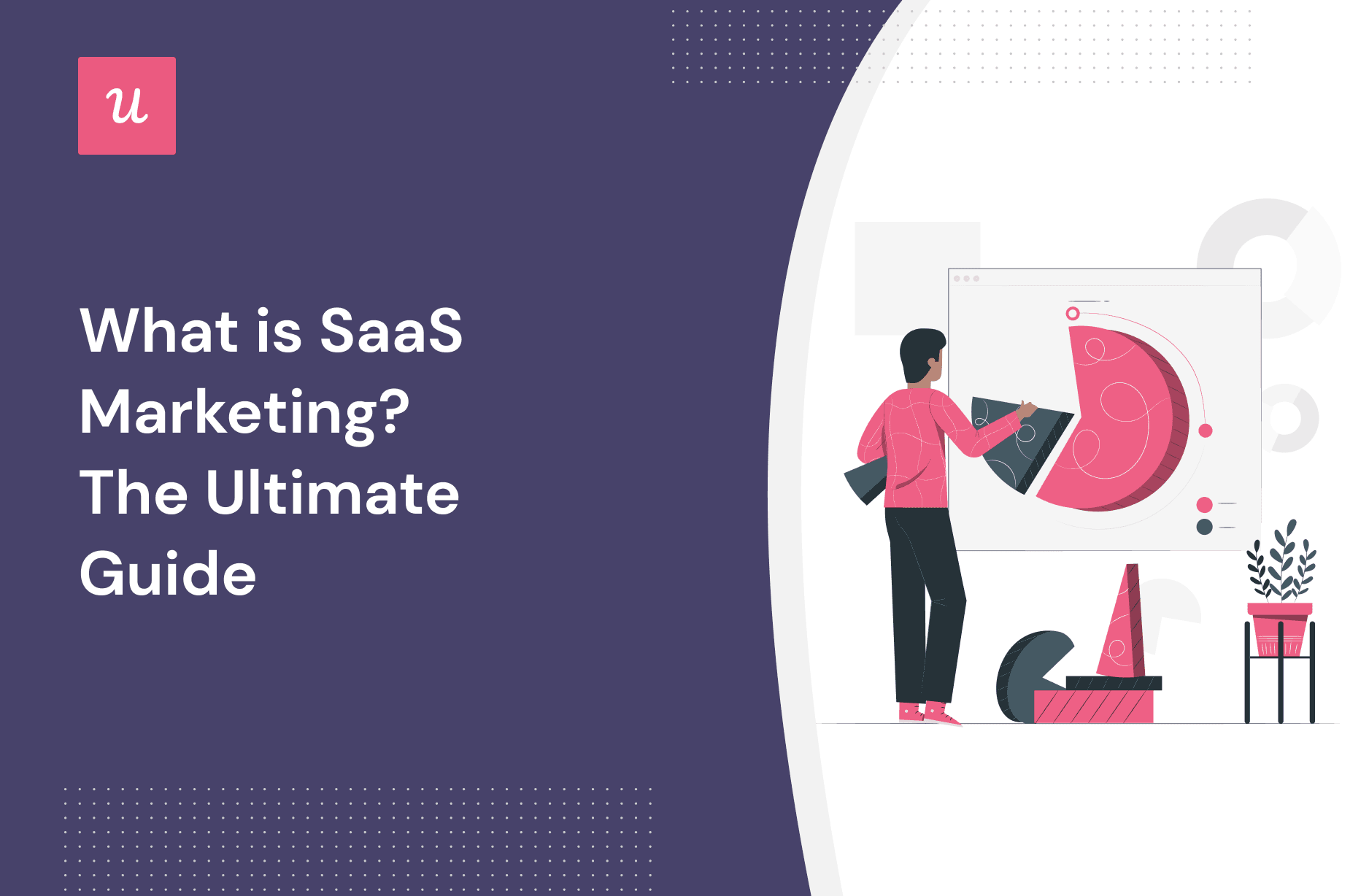
Try Userpilot Now
See Why 1,000+ Teams Choose Userpilot

What is SaaS marketing?
SaaS marketing is the means through which you bring a product to market, build awareness, drive signups, and grow recurring revenue.
Having a clear SaaS marketing plan is essential to landing new users, keeping the customers you already have, and increasing their lifetime value over time.
How is SaaS marketing different from digital marketing
SaaS products are often offered on a subscription model, meaning retention is just as important as acquisition (if not more important). In addition to generating leads, a SaaS marketing strategy should also seek to educate potential customers on the value proposition of the product.
Another notable difference is that a sizeable percentage of SaaS marketing efforts occur inside the product itself while traditional digital marketing relies heavily on external channels such as organic social media or paid ad campaigns to reach customers.
What you include in your SaaS marketing playbook will depend on who your customers are. Account-based marketing is the preferred approach for enterprise solutions while software bundles often leverage email marketing to generate sales.
What are the different components of SaaS marketing?
If you talk to a SaaS marketing agency, you’ll likely see each SaaS marketing campaign broken down into five different stages:
- Attracting leads. Any inbound marketing campaign needs to start by attracting potential customers that align with the target audience of SaaS businesses — often through traffic from search engines or social media.
- Nurturing leads. Once you have the attention of a potential customer, you need to continue nurturing them along the sales process until they understand the value proposition and convert into a customer or at least sign up for a free trial.
- Retaining customers. Ensuring that customers stay with your SaaS service long-term is crucial since most of their lifetime value (LTV) is derived from subscription renewals rather than their first upfront payment.
- Enhancing revenue. Driving account expansion to increase the amount of revenue that your loyal customers generate is always a core goal for any SaaS marketer.
- Tracking performance. Last but not least, any type of marketing campaign needs a system for tracking performance so you can allocate your marketing budget in the most effective way possible.
How to create an effective SaaS marketing strategy
The sections below will walk you through the six steps you need to take to create a successful marketing strategy for your own SaaS products!
Identify your target audience and customer personas
First and foremost, you need to identify who your target audience is and create customer personas that reflect it.
There are multiple ways you could go about this. Some SaaS marketers prefer to look at the data from your current customers and use that as a foundation for user personas.
After all, the best way to ensure customer retention is by first understanding the needs of your current customers. You could use a user persona survey to collect customer data and figure out who your SaaS marketing should target moving forward.
To get the most accurate picture, you should combine both quantitative and qualitative data.
Examples of quantitative data include:
- Demographics. Age, gender and/or sex, marital status, education level, location, and profession are all examples of demographic data.
- Statistics. Statistical data from databases, journals, and other online sources also count as quantitative data.
Don’t read too deeply into quantitative data though. Knowing that your users are mostly made up of married 40-year-old teachers is nice information to have but it’s far more important to understand how they interact with your product through qualitative data.
Examples of qualitative data include:
- Survey responses.
- Personal interviews.
- Focus group insights.
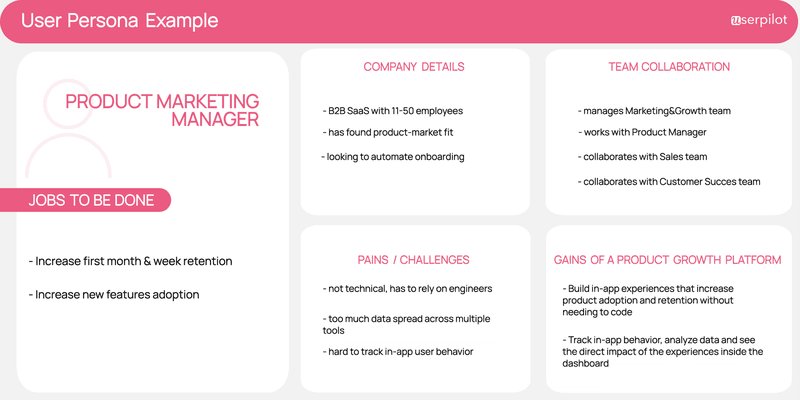
Define your positioning and messaging
Next, you’ll need to decide how to position your product and the messaging you want to build around it.
Positioning makes it possible to set clear expectations with prospects that leverage your product’s unique benefits and competitive advantage over alternatives.
Well-defined messaging strategies help you effectively communicate the core benefit(s) of your product to any potential customers.
Positioning and messaging often go hand in hand as they have to remain consistent with one another.
Choose marketing channels
Once SaaS marketing teams have identified the target audience and defined the positioning of the product, it’s time to select the marketing channels that will be used to drive acquisitions.
There are a few SaaS marketing you could consider:
- In-app marketing. In-app marketing is one of the most reliable ways for your marketing team to connect with customers as their messaging will appear while users are inside the product.
- Content marketing. The humble blog post has become a staple of the SaaS industry as Google Analytics shows that organic traffic is a highly effective way to drive qualified leads to your product.
- Search engine optimization. SEO often goes hand-in-hand with content marketing as it ensures that SaaS companies are able to rank high in the search engine results pages (SERPs).
- Email marketing. While outbound marketing strategies like email may not be as popular an acquisition method for SaaS companies, it has a fairly good track record in the SaaS marketing space.
- Social media marketing. Much like physical products, most consumers look at the social media presence of SaaS products before making a purchase so making sure you’re active on these channels is quite important.
- Google ads. Pay-per-click advertising won’t be the right fit for every SaaS company as paid ads can get rather expensive over time. That said, paid ads can be used strategically to boost new content and get your product in front of customers sooner.
- Influencer marketing. Influencer marketing can be a great way to leverage other people’s audiences and accelerate your growth across multiple social media platforms.
- Referral marketing. Referral programs are a very effective strategy for SaaS companies as they reward the loyalty of existing users while providing an incentive for word-of-mouth marketing.
Set SaaS marketing metrics to measure the success of your marketing efforts
Like any traditional marketing campaign, having the right metrics in place is paramount to measuring the ROI of your efforts. The exact set of product marketing KPIs you use to measure marketing outcomes will depend on the goals you’ve set for your campaigns.
A few SaaS marketing metrics to consider using include:
- Customer acquisition cost (CAC): Monitoring your CAC will ensure that you’re not overspending (relative to customer lifetime value) and still have a high enough profit margin to actually make money from the users you’re landing.
- Customer lifetime value (LTV): Tracking LTV growth will help you gauge the efficacy of your customer expansion strategies.
- Trial-to-paid conversion rate: Your free trial conversion rate will be a good indicator of how streamlined your onboarding process is and whether or not improvements are needed.
- Retention rate: Your retention rate will be the most reliable measure of how happy customers are with your product. High retention rates mean they’re getting consistent value out of the product over long periods of time.
- Monthly recurring revenue (MRR): Not all SaaS marketing efforts will have an immediate or direct impact on revenue growth but you should still track the trajectory of your MRR over time. Sluggish MRR growth could be an indicator of poor product-market fit, high churn, or a pricing mismatch.
- Churn rate: Reducing the churn rate should be a key priority for any SaaS business as it’s a lot cheaper to keep the customers that you already have rather than constantly trying to get new signups.
- Net Promoter Score (NPS): NPS data tells you how likely existing customers are to refer your product to friends or colleagues.
- Customer satisfaction score (CSAT): CSAT scores are often used to track the level of satisfaction that customers have with your product.
Develop your SaaS marketing strategies
Once you’ve chosen your marketing channels and the KPIs that you’ll use to measure success, it’s time to select specific SaaS marketing tactics that you can deploy throughout your campaigns. To get the most out of these tactics, you should follow a few SaaS marketing best practices such as:
- Using product-led growth to reduce acquisition costs.
- Including CTAs in all published content.
- Driving feature discovery with in-app announcements.
- Gathering feedback from your users.
- Providing self-service support resources.
- Adding micro videos to onboarding flows.
- Gamifying the onboarding experience.
Measure and improve to ensure SaaS marketing success
SaaS marketing is an ongoing process that requires constant improvement to get the best results.
In addition to the product marketing KPIs you selected earlier, you can also look at objectives and key results (OKRs) to see if your campaigns are hitting the milestones needed to achieve your goals.
Marketing strategies for SaaS companies to implement in real-life
Theoretical strategies or a list of marketing tactics is all well and good but what happens when it’s time to implement them in a real-life setting?
Here are the actionable steps you need to take to increase monthly recurring revenue, reduce customer churn, and increase the average customer retention period!
Create a content marketing strategy to drive trial signups and reduce CAC
While it can take a while for content to start ranking on Google results and driving organic traffic toward your product, there’s no question that content marketing is one of the best ways to reduce customer acquisition costs in the long run.
The benefits of a robust content marketing engine are two-fold since you’re attracting readers while simultaneously giving them a reason to try your product out.
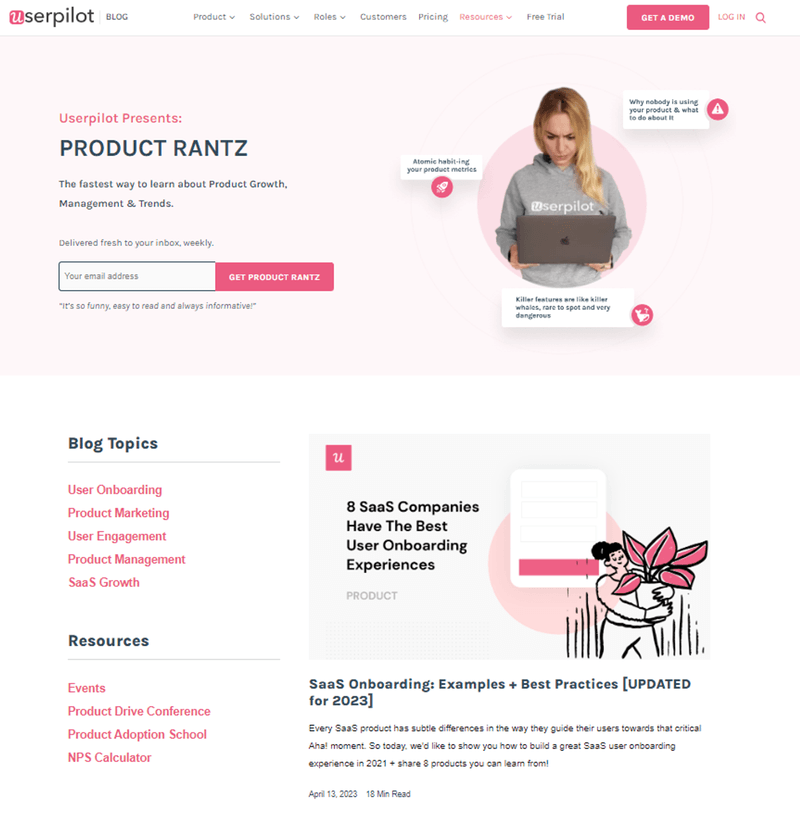
Offer a free trial to acquire new users
The SaaS sales cycle can be a long and arduous journey, so you shouldn’t expect new users to hand over their credit cards right out of the gate.
Offering a free trial can be a great way to land new users who are still on the fence about whether or not they’d be willing to pay for the product you offer.
There are a few decisions you need to make when setting up your free trial such as:
- How long the free trial will last.
- Which features to include in the free trial.
- Whether a free trial or paid trial is best.
Paid trials tend to have higher conversion rates because they only let qualified leads test your product out. That said, the fact that you still need to take out your credit cards and pay for the trial period means you’ll likely get fewer signups compared to a traditional free trial.
As for trial length and feature inclusions, that will vary depending on how complex your product is.
In any case, users are more keen to pay for a product after they’ve experienced its value first-hand.
Create a personalized experience for new customers
As the number of SaaS tools on the market continues to increase, customers are no longer willing to pay for a boilerplate user experience. Personalizing the experience is essential if you want to keep your users from jumping ship to alternative solutions.
Adding a welcome survey at the start of your onboarding process is the most straightforward approach as it will give you a chance to start the segmentation and personalization process early on in the customer journey.
The customer data that you collect from welcome surveys will help you segment users based on the characteristics that they share and then only show content or features that are most relevant to their specific use case.
Here’s a look at Userpilot’s segmentation dashboard to give you an idea of the conditions you can set:

Implement a self-service marketing strategy
Self-service experiences have been rising in popularity over the past few years and it’s not hard to see why. When users are able to solve problems themselves, customer success rates go up. This means self-service support increases customer satisfaction while simultaneously reducing support costs.
In that way, adding an in-app resource center is mutually beneficial both to your company and its customers. For instance, even a minor resource like an FAQs page could drastically reduce the number of repetitive support tickets coming in and free up your agents for more complex cases.
Pro tip: if you’re not sure what to include on your FAQs or resource centers then just as your support team.
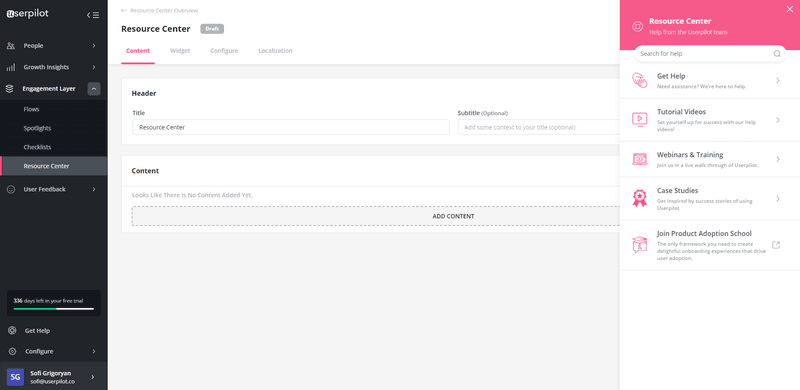
Gamify the onboarding experience for your SaaS customers
Have you ever wondered why people complain about linear product tours but don’t mind going through multiple tutorial levels when playing video games? Well, there’s one obvious but important distinction to make: video games are fun.
That observation doesn’t need to be accepted as an unchangeable reality though. There are many gamification strategies that you can use to make learning about your SaaS product more fun for new and existing users alike.
Gamification uses elements from video games — such as points, badges, and other rewards — to keep users engaged and incentivize self-guided customer education. ProdPad is a prime example of how gamification can encourage users to continue exploring your product and the value it offers:
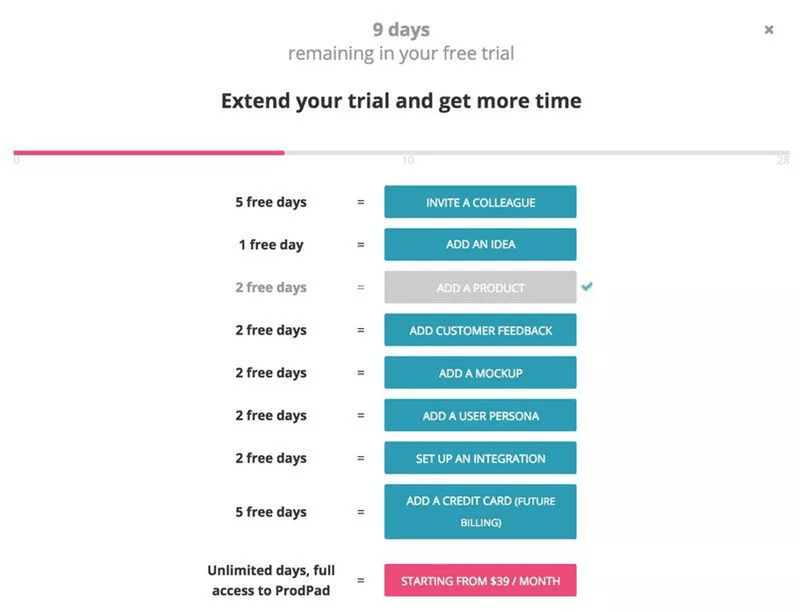
Implement video content marketing to educate existing customers
Articles or blog posts are usually what come to mind when you hear the phrase “content marketing” but it’s important to realize that written content is only one half of the equation. Integrating videos into your content marketing strategy can be a boon for customer onboarding.
Micro videos — either within onboarding flows or UI popups — can teach users about specific features in a bite-sized and easily digestible format. Video onboarding also feels less intimidating than filling your user’s screen with UI highlights and links to long resources on your knowledge base.
Loom uses video content to teach users how to use its product in the most engaging way possible:
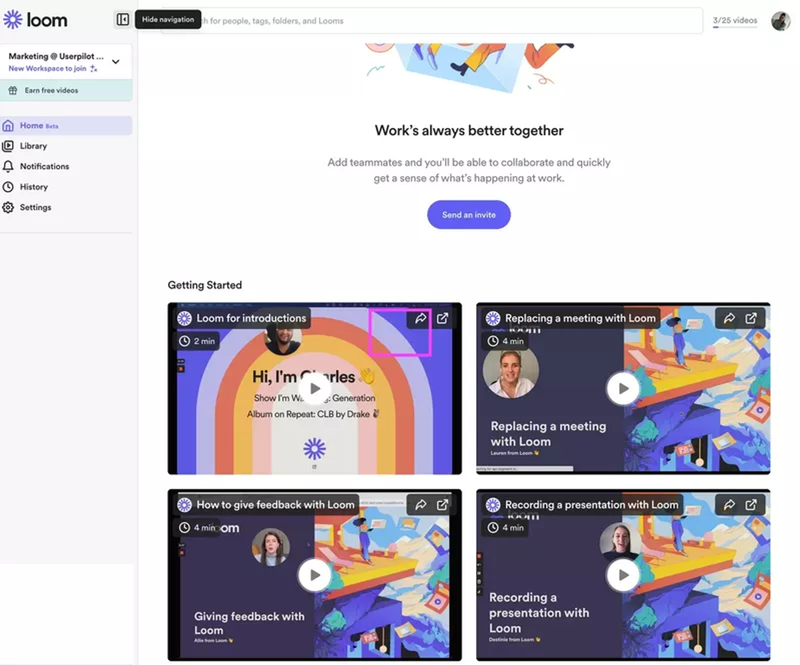
Celebrate success with your customers
Celebrating milestones is a quick and easy way to build customer loyalty. Whether it’s completing their first task, using a new feature, or achieving other goals, congratulating them will make them feel happier about the milestone and more loyal to your brand as a result.
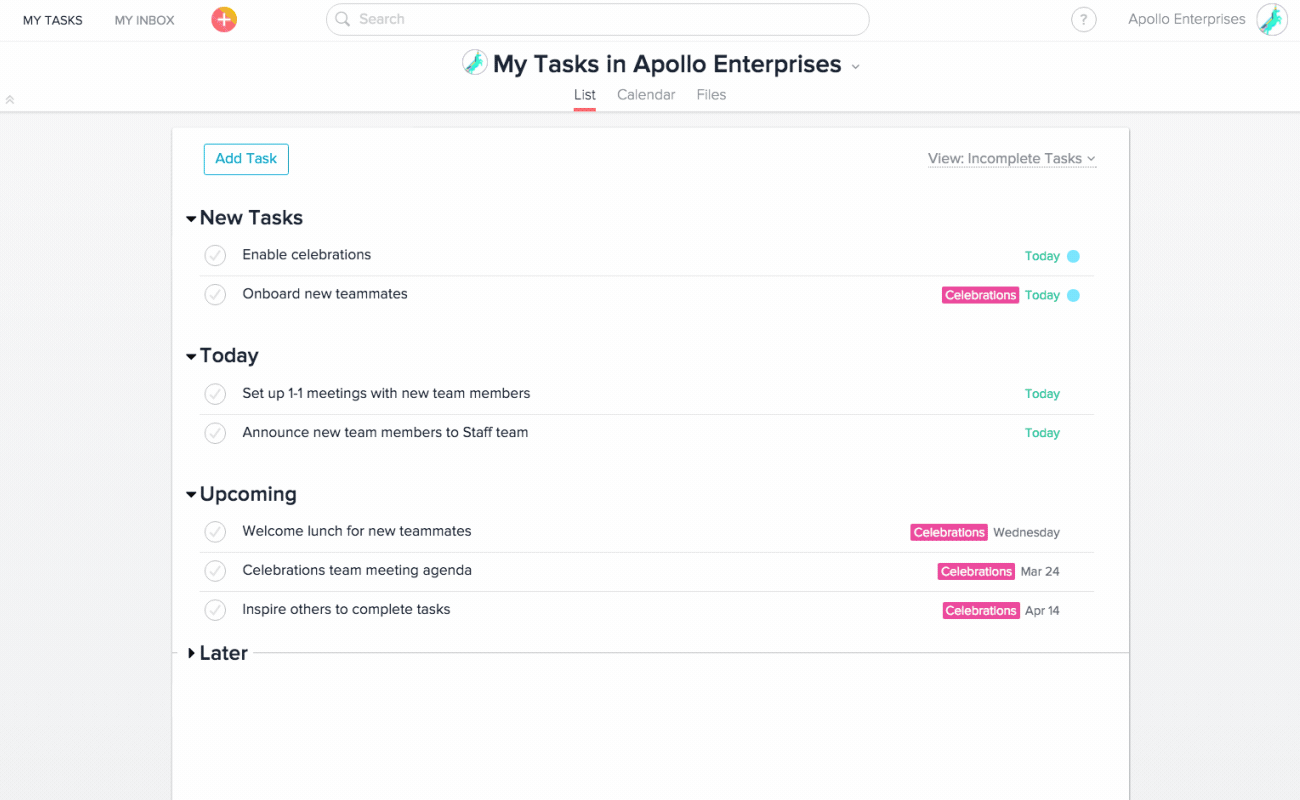
Asana’s unicorn is the most famous example of this tactic. Whenever you accomplish a task on Asana, a unicorn riding a rainbow flies across your screen to celebrate your win and give you a sense of meaningful success. In turn, this dopamine hit makes users want to engage with the product more often.
Identify customer needs and meet them in-app
Looking at product usage analytics or feedback survey responses to identify patterns and then predict customer needs is an invaluable step when attempting to improve the in-app experience. Having this data on hand will help you proactively meet customer needs to reduce churn before it occurs.
For example, if you notice plenty of customers requesting a specific feature that already exists then you could create an interactive walkthrough that brings more users towards it. This will keep them from churning just because they didn’t know that a feature they wanted was already available in the app.
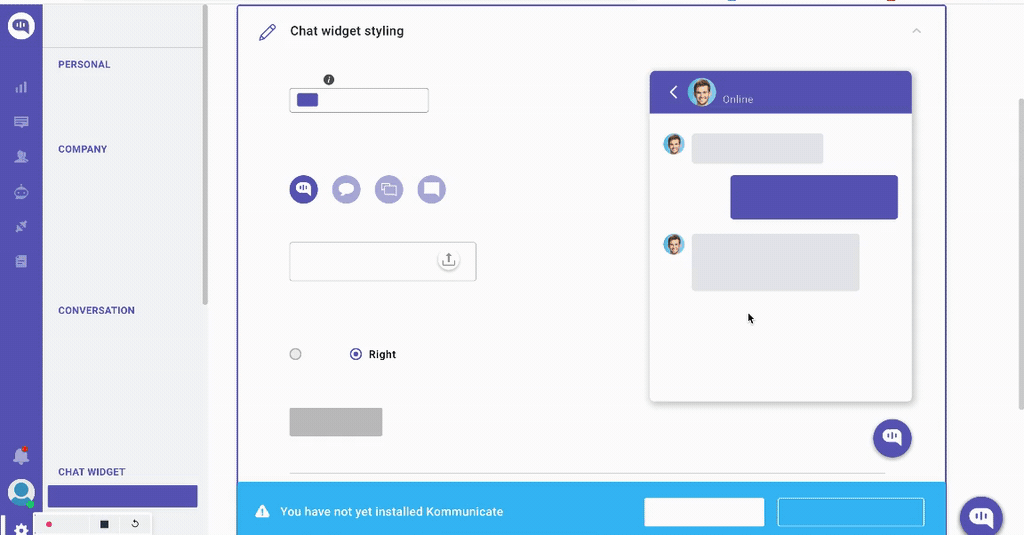
Offer trials of premium features
If your business operates on a freemium model then offering trials for premium features could be a great way to show users what they’re missing out on and prompt a permanent upgrade to a paid plan. This is especially useful if you get a good free trial conversion rate yet have the majority of users on a free plan.
Users who have already decided to stick around for free are more likely to convert into paid customers if you give them a few more reasons to switch to the premium subscription instead of remaining in the freemium tier (ideally, right as their initial trial period ends).
Asana uses the same strategy by leveraging their Goals feature:
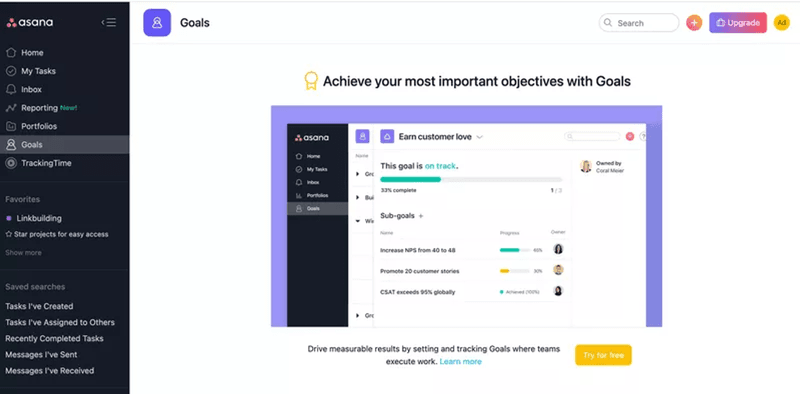
Create referral programs to attract potential customers
Referral programs are a great match for SaaS brands because they build customer loyalty while increasing word-of-mouth marketing in the process. Referral programs reward your existing users whenever they refer a new customer to the solution.
Evernote has the best execution of this tactic as they use time on their Premium plan as the reward:
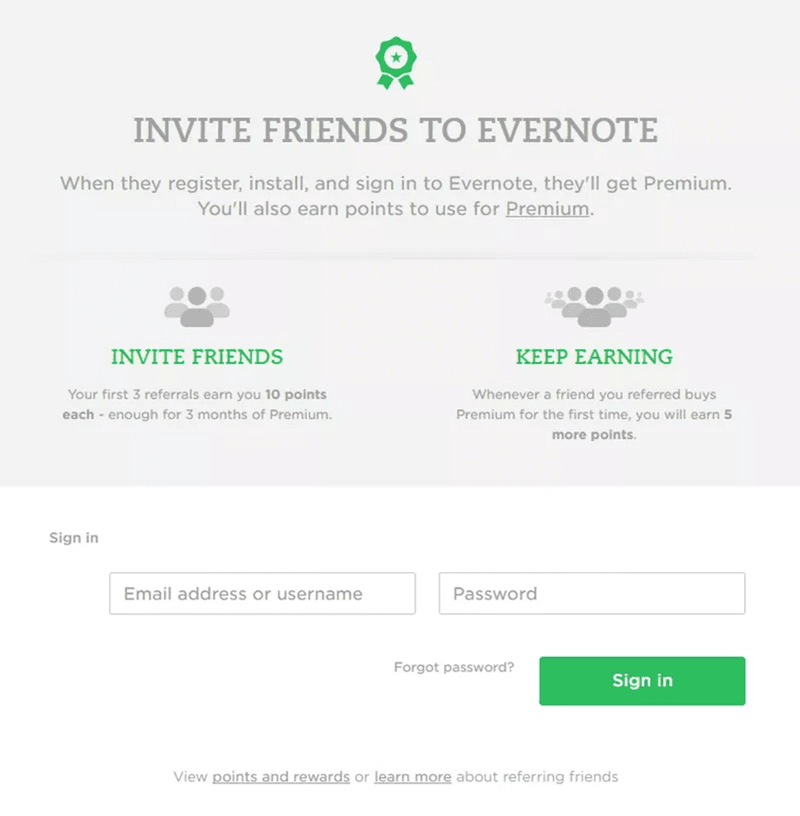
Rewarding users with Premium trials whenever they refer someone increases the chance that they’ll stay on a paid plan once the time they’ve earned runs out — especially if you have particularly sticky features. The other scenario would be that they continuously refer users to stay on the Premium tier indefinitely.
Build a community around your SaaS company
If lasting customer relationships are your goal then building a community around your SaaS company and the product(s) it offers is a must. We even use this very strategy at Userpilot with our Facebook group named Product Marketing & Growth:
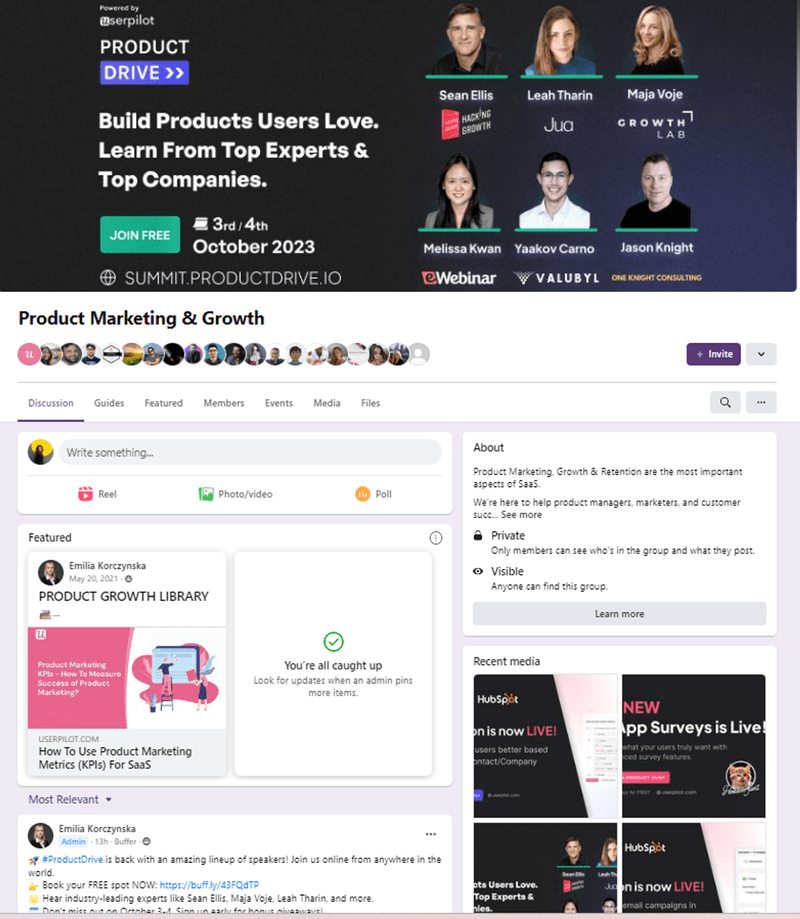
Use churn surveys to minimize the number of churning customers
Figuring out why users are churning is the first step toward minimizing churn. Churn surveys are your last chance to engage with customers and find out what the problem is before they leave your platform. You can also offer alternative options such as pausing their subscription or availing a limited-time discount.
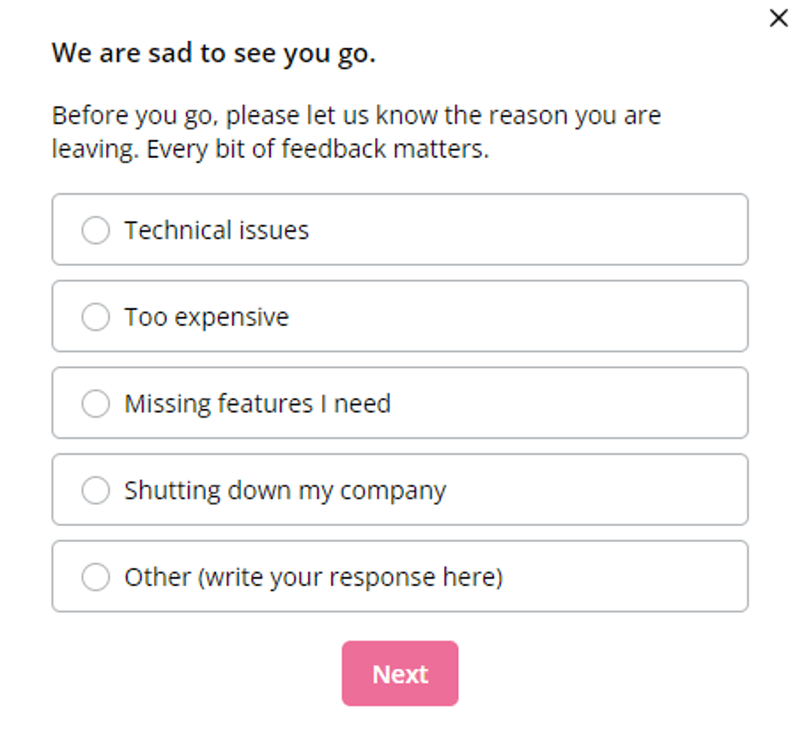
Ultimately, the responses you get on churn surveys will help you figure out whether it’s your positioning, messaging, or pricing that you need to change. Alternatively, churn surveys can help you identify flaws with specific features or the core product itself so you can fix these issues before more customers leave.
Conclusion
As you can see, SaaS marketing is a multi-faceted endeavor that can’t be simplified into a few “growth hacks” without losing much of its value. If you combine the tactics, strategies, and best practices in this guide then you’ll be one step close to your next successful campaign.
At the end of the day, it comes down to you to select the right audience, identify the most effective channels, and remain consistent in your execution. If you’re ready to take your product growth to the next level with higher retention, lifetime value, and customer loyalty then get your free Userpilot demo today!





